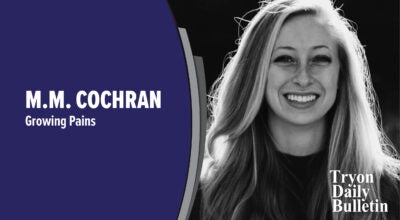Dehydroepiandrosterone (DHEA for short) and you
Published 10:00 pm Thursday, August 14, 2014
The subject for this week’s column a substance found in most fruits and vegetables, that not only helps protect plants as they grow, but us too…phytonutrients. Plants, as they grow, produce these compounds to protect themselves from harm. You see, unlike humans, and most animals plants are at a real disadvantage, because they are stuck in one place. If a plant gets sick with mold or fungus, the plants next to it can’t just get up and move a safe distance away. Plants have to stay right where they are and battle disease, injury, drought, insects, excessive heat, and pollutants in soil and water.
Plants produce these phytonutrients as part of their immune systems. The word “phyto” comes from the Greek word, meaning plant. Since phytonutrients aren’t considered “traditional” nutrients like fats, carbohydrates, protein, vitamins, and minerals, they’re sometimes referred to as “phytochemicals”. Also, their use for healthful benefit isn’t just recent; in fact it’s believed Hippocrates may have prescribed willow tree leaves to abate fever.
Salicin, extracted from willow tree bark would later be synthetically produced, and known as over-the-counter aspirin. Scientists estimate as many as 10,000 different phytochemicals that may affect cancer, cardiovascular disease, metabolic disease, age-related macular degeneration, and protect our bodies from oxidative damage.
There are several classes of phytonutrients, but the best known are “carotenoids”. Carotenoids are pigments that give fruits and vegetables their red, yellow, orange, or purple colors. By the way, phytonutrients are also responsible for fruit and vegetable odors. This is known as the plant’s “organoleptic” quality. Some common carotenoids and their sources include alpha-carotene (carrots), beta-carotene (leafy greens and yellow vegetables like butternut squash, also kale, collards, turnip greens, carrots, and sweet potatoes), beta-cryptoxanthin (citrus fruits, peaches and apricots), lutein (leafy greens like kale, spinach, and turnip greens), zeaxanthin, (leafy greens, eggs, citrus).
Another important phytochemical found in fruits and vegetables are “sterols”. Sterols are a subgroup of steroids. Sterols in plants are called phytosterols, sterols in animals are called zoosterols. Phytosterols have been shown to block cholesterol absorption sites in the human intestine, thus reducing blood levels of cholesterol. Pytosterols, also act as precursors to human sterols. These act to modulate the human endocrine system, thereby making it possible for the body to produce Dehydroepiandrosterone (DHEA for short).
DHEA is a hormone produced by the adrenal glands and serves in a variety of functions. This hormone is often referred to as the “mother” hormone, because of its ability to convert itself into other hormones such as testosterone, estrogen, progesterone, and corticosterone. That makes DHEA a precursor to all other human hormones. Research shows that adequate DHEA in the body can slow the aging process, and help prevent and reverse conditions such as cancer, cardiovascular disease, memory loss, obesity, and osteoporosis.
Human DHEA levels peak between ages 20 to 25, then decline with age. I don’t recommend DHEA supplementation, unless advised by your doctor, because too much of this hormone has been shown to increase blood clotting, an over abundance of estrogen in men, and increase hormone related cancers like prostate, breast, and ovarian. We do need this hormone and all the phytochemicals discussed today for good health, but get them the way nature intended.
By eating your fruits and vegetables.
Diet or exercise question? Email me at dwcrocker77@gmail.com or visit fitness4yourlife.org. David Crocker of Landrum has been a nutritionist and master personal trainer for 28 years. He served as strength director of the Spartanburg Y.M.C.A., head strength coach for the USC-Spartanburg baseball team, S.C. state champion girls gymnastic team, and the Converse college equestrian team. He served as a water safety consultant to the United States Marine Corps., lead trainer to L.H. Fields modeling agency, and taught four semester at USC-Union. David was also a regular guest of the Pam Stone radio show.





